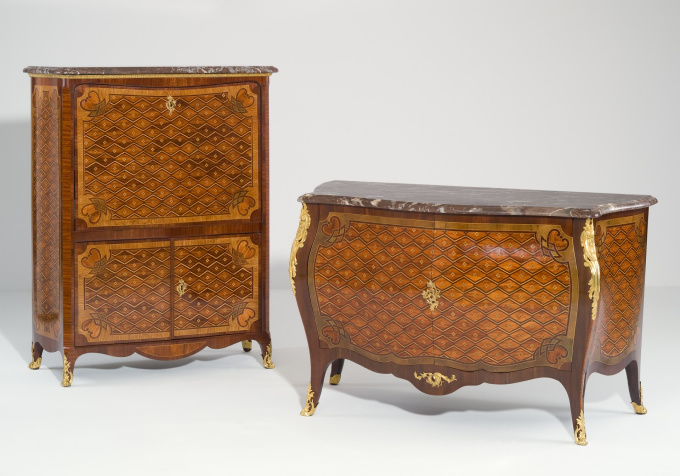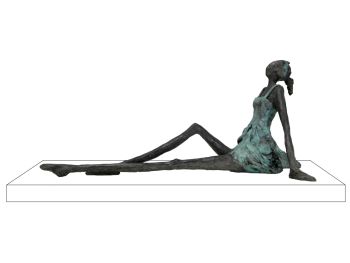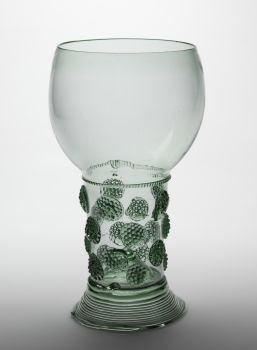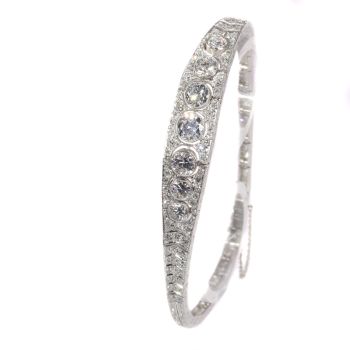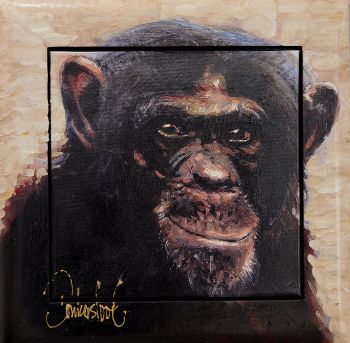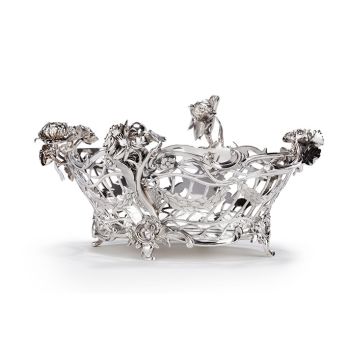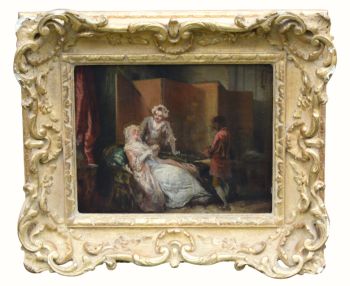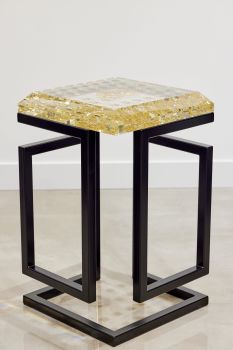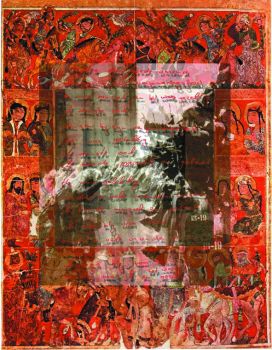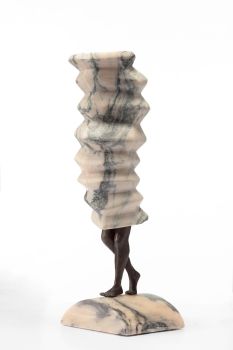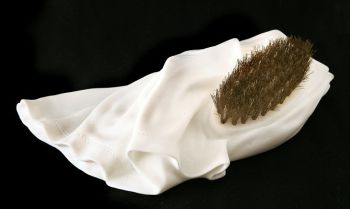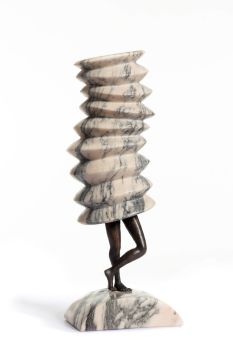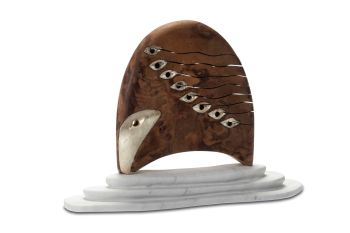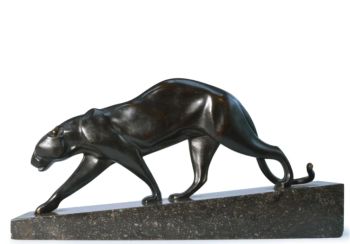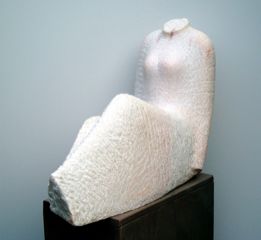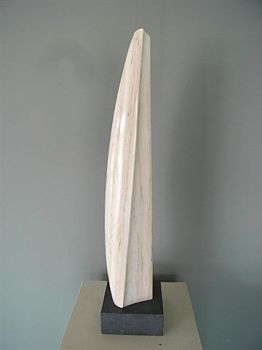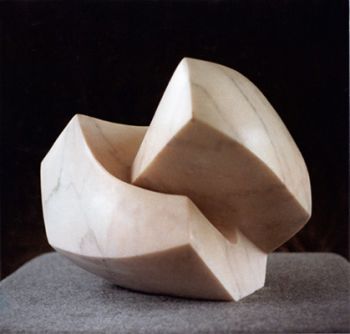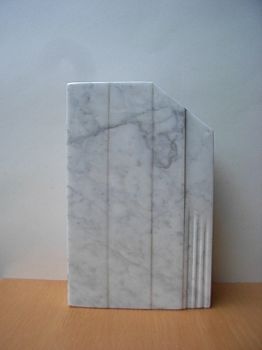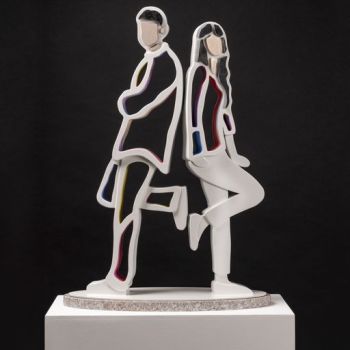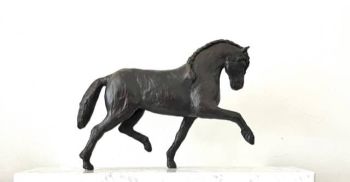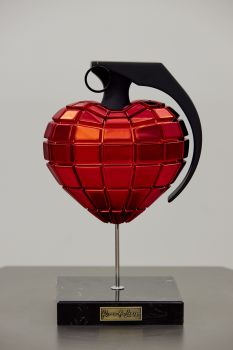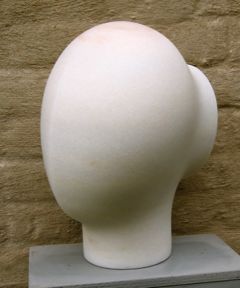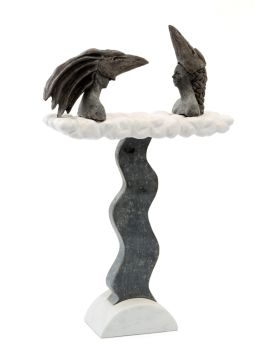A Matched Ensemble of Secrétaire and Commode 1760 - 1770
Artista Sconosciuto
MarmoPietraLegnaQuerciaMarmo rosso
89 ⨯ 144 ⨯ 66 cm
Attualmente non disponibile tramite Gallerease
- A proposito di opere d'arteCommode
The commode has an interior with one shelf. The front and side are bulged out. The front is fitted with to doors instead of drawers. The doors are fitted with a bronze ornamented scutcheon in the middle. The curved corners are mounted with gilt bronze mounts that are decorated with acanthus and flowers. The mounting on the skirt and the scutcheon are decorated with asymmetrical rocailles and flowers.
Front and sides of the commode are decorated with a geometrical inlayed zig-zag pattern that is studded with small rosette-motives. The geometrical pattern is framed in a cartouche.
Measurements: heigth 89 cm, width 144 cm, depth 66 cm.
Secrétaire
The lower part of the secrétaire is a cupboard with a shelf that is closed by two doors. The upper part is closed by a leaf that once extended serves as a writing desk. The writing desk is lined with green leather. The interior is veneered with mahogany, boxwood and kingwood. The interior has seven drawers, an open section and a curved shelf. The exterior is decorated on the side and the front with a geometrical inlayed zig-zag pattern that is studded with small rosette-motives. The zigzag pattern is framed in cartouches with ornamented corners.
Ensembles of different types of furniture with a similar decoration were often seen in the 18th century as a means to enhance the unity of an interior. In the Netherlands this practice was copied from the French, who were very strong on the unity and harmony of colours and materials in the interior design.
An identical commode is to be found in the collection of the Markiezenhof in Bergen op Zoom. Undoubtedly these commodes were once eachother’s pendants that might have been seperated when the pieces were auctioned after the owners decease.
Measurements: height 137 cm, width 109 cm, depth 46 cm. - A proposito di opere artista
Può succedere che un artista o un creatore sia sconosciuto.
Alcune opere non sono determinate da chi sono state realizzate o sono state realizzate da (un gruppo di) artigiani. Esempi sono statue dell'antichità, mobili, specchi o firme non chiare o leggibili ma anche alcune opere non sono affatto firmate.
Inoltre puoi trovare la seguente descrizione:
•"Attribuito a …." A loro avviso probabilmente opera dell'artista, almeno in parte
•“Studio di ….” o “Officina di” A loro avviso un'opera eseguita nello studio o nella bottega dell'artista, eventualmente sotto la sua supervisione
•“Cerchio di…” A loro avviso un'opera del periodo dell'artista che mostra la sua influenza, strettamente legata all'artista ma non necessariamente al suo allievo
•"Stile di..." o "Seguace di..." A loro avviso un'opera eseguita nello stile dell'artista ma non necessariamente da un allievo; può essere contemporaneo o quasi contemporaneo
•“Modalità di…” A loro avviso un'opera nello stile dell'artista ma di epoca successiva
•"Dopo …." A loro avviso una copia (di qualsiasi data) di un'opera dell'artista
•“Firmato…”, “Datato…” o “Iscritto” A loro avviso l'opera è stata firmata/datata/inscritta dall'artista. L'aggiunta di un punto interrogativo indica un elemento di dubbio
•"Con firma....", "Con data...", "Con iscrizione..." o “Riporta firma/data/iscrizione” a loro avviso la firma/data/iscrizione è stata aggiunta da qualcuno diverso dall'artista
Artwork details
Related artworks
- 1 - 4 / 12
- 1 - 4 / 17
Artista Sconosciuto
A rare Japanese export lacquer medical instrument box1650 - 1700
Prezzo su richiestaZebregs & Röell - Fine Art - Antiques
Artista Sconosciuto
UN MODELLO GIAPPONESE DI UN NORIMONO, UN PALANQUIN1650 - 1700
Prezzo su richiestaZebregs & Röell - Fine Art - Antiques
Artista Sconosciuto
UN NETSUKE MARINO IN AVORIO DI UN OLANDESE CHE TIENE UN FAN . CINESE18th century
Prezzo su richiestaZebregs & Röell - Fine Art - Antiques
Artista Sconosciuto
UN NETSUKE IN AVORIO DI UN OLANDESE CHE TIENE UN GALLETTO18th century
Prezzo su richiestaZebregs & Röell - Fine Art - Antiques
1 - 4 / 24- 1 - 4 / 24

